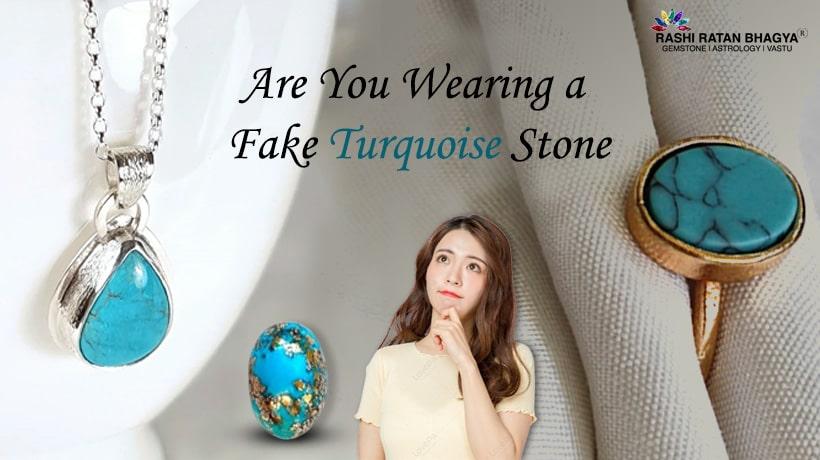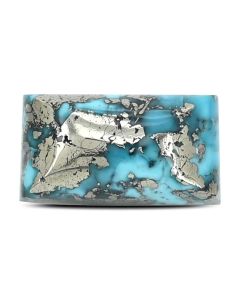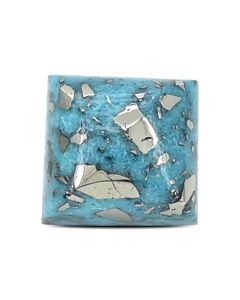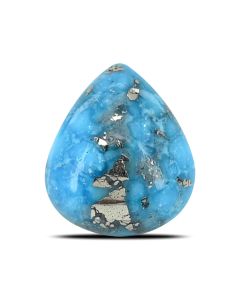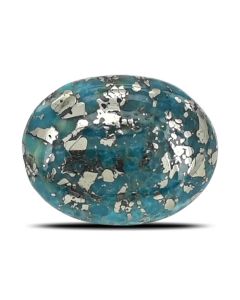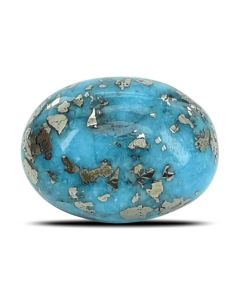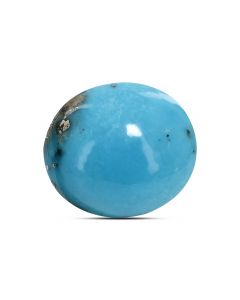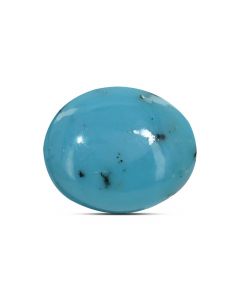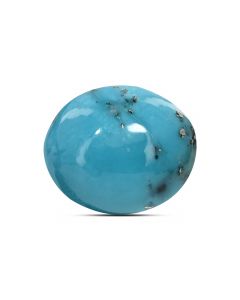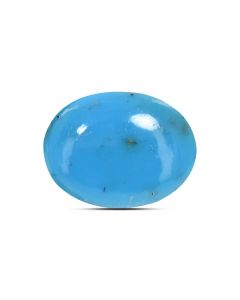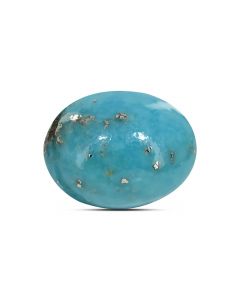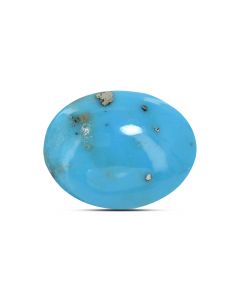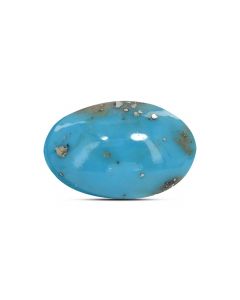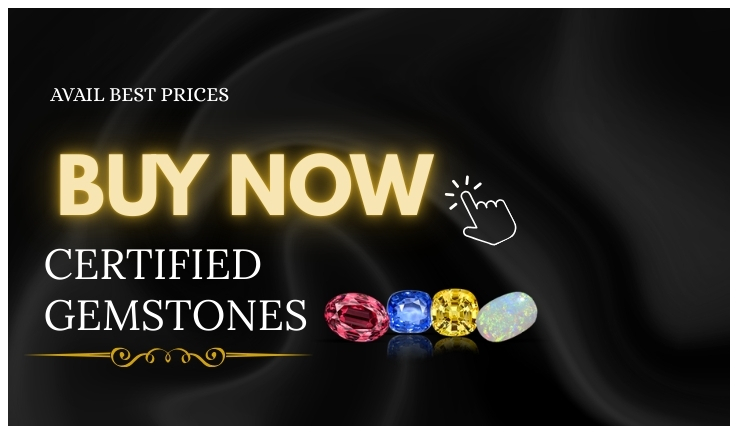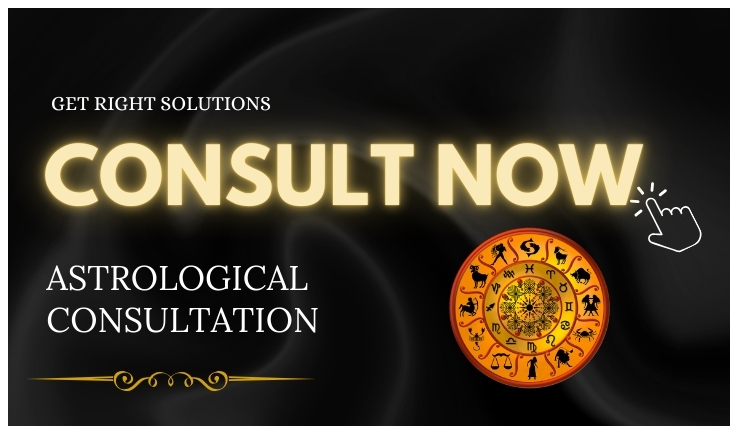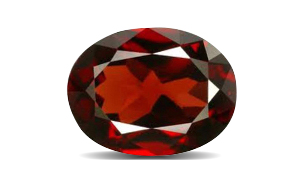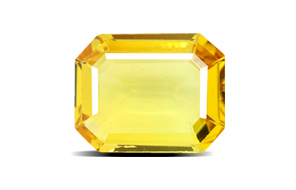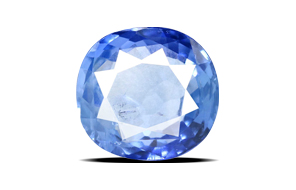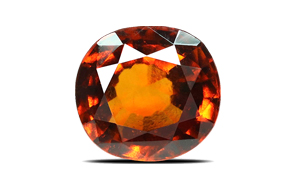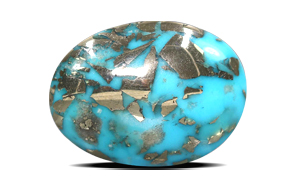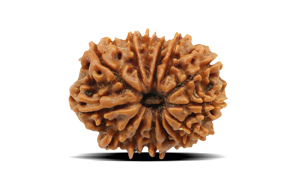It may sound cliché in a world filled with exquisite gemstones but turquoise shines with its aesthetic blue-green color and more extensive history. Famous for its great hue and deep meaning, this stone was and still is adored by people all around the world.
However, it has necessitated imitation stones to flood the market due to their popularity. Since Salman Khan has been seen wearing a Turquoise bracelet, which his father gifted him and after wearing which his career spiked, the demand of the stone has been increased.
This demand made fake gems come into the market. If you also want to embrace this stone and gain its benefits, it is essential that you wear an original one but, how do you find out now whether you are wearing natural turquoise or a fake one?
Now it’s time to go deeper into the topic and browse through the jungle of fake ones. A fake turquoise stone will not bring you good luck or its positive energies. Plus, it will be a waste of your hard-earned money.
In this blog, we have mentioned how to tell if your Feroza is fake?
Watch Us on YouTube @RASHIRATANBHAGYAOFFICIAL
Turquoise Stone Significance
Turquoise is an amazing gemstone that comes in a light blue hue. The patterns in it fascinated people for centuries. It was considered a symbol of wealth, protection, and serenity. Perfectly plain and beautifully quirky, this stone adorns the collections of gem and jewel collectors and fans due to its rich and mysterious symbolism. Starting from the earliest times as protective talismans and going to the rings of current celebrities, people have not ceased to admire these gemstones.
However, demand creates opportunities, and vices and cheap fake turquoise are peddled as real stones by some unscrupulous traders while the unsuspecting buyers are left to make their grievances. The solution to this problem is learning the difference between real turquoise and cheap fakes so you can avoid being ripped off.
How to Recognise Real Feroza From Fake One?

Since Feroza stone is in demand, there are many variants and treatments to make it look like the original stone. Here are some common fake turquoise materials and how to identify them:
- Enhanced Turquoise: Many of these stones are either dyed, waxed, or impregnated with polymers to improve their looks. These treatments may be 100% real but they change the value of the stone quite dramatically by making it less of a natural material.
Since Turquoise is quite a soft stone when it cracks, all the cracked stones are compressed together to form a slab and then cut from them. These are reused stones and so they are not as effective as the natural ones which are directly mined and cut.
- Howlite and Magnesite: These white minerals are normally dyed to look like real ones. Usually dyed howlite or magnesite will have an unmistakable signal, the color is not only uniform, but there are no natural textures. Sometimes if one uses a needle or nail to scrape the skin, one can see the white at the back of the dye.
Natural Turquoise Vs Magnesite Turquoise

In the market these days, the cheap Feroza stones that are available are mostly Magnesite Turquoise. Magnesite is the magnesium carbonate while the real Feroza has copper-containing aluminum phosphate. The chemical composition of the two is very different.
The magnesite Feroza has low value, it can range between INR 500 to 2000 because the gemstone is simply dyed blue. But it is not effective.
Why Is the Market Filled With Magnesite In The Name Of Turquoise?
Magnesite is dyed with the same blue of Feroza and with the demand of the Feroza in the market at low prices, people have come up with these fake gems.
- If you want to gain the benefits of Feroza then you should buy it from a reputable source like Rashi Ratan Bhagya.
- A real turquoise will not be cheap. Its price range starts with INR 3000 and go up to thousands of rupees.
- If you are wearing one, then get it checked from a reputable laboratory to ensure the authenticity of the stone.
Simple Tests for Authenticity
If you suspect your turquoise might be fake, a few simple tests can help determine its authenticity:
- Visual Inspection: Take a magnifying glass to the stone and try to have a look at the surface in detail. It involves searching for breaks in color and uniformity, structure and tone, and interlayering of the rock mass. In authentic turquoise, you’ll see some sort of a flow and it will never be perfect or too regular on the surface, it will be random.
- Scratch Test: As already covered here, if one lightly scratches the surface with a needle or pin, he may find dye or some materials. This, however, is a test that requires a bit of care since it has an adverse effect on the stones.
- Heat Test: Take the stone over the fire and heat it for a few seconds. Real turquoise will remain intact or discolored, and plastic replicas will melt or have a toxic odor. This test should be done gently in order not to harm the stone in the process.
- Acetone Test: Acetone, the main ingredient in the nail polish remover, can be used to expose dye treatments just by gently rubbing the stone. If its color goes off on the cotton swab or cloth, then it shows that the said turquoise is dyed or is a copy.
Professional Authentication
Although home tests may give you a vague idea of the situation, the professional examination of jewelry items is the ultimate level of identification. Qualified gemologists are experts in the testing of gems; they can tell you everything about your turquoise and may have to use even more sophisticated methods like spectroscopic and x-ray diffraction analysis to ascertain whether your gem is real.
Conclusion
For turquoise, it is not only a stone, but it is a piece of history, culture, and natural art. Thus, knowing that you possess a genuine gem saves its worth and historical impact that is connected with this amazing stone.
To this end, knowledge and alertness are your principal weapons of defense in the pursuit of this so much-needed genuine fiction. With the information provided here, anyone can enjoy and appreciate the allure and history of turquoise, and with knowledge on its potential fakes, would be able to do so without a second guess.
Though, the best way to get an authentic gem is that you buy from a trustworthy source like Rashi Ratan Bhagya. Reputable sellers will provide you with a lab certificate of the gems which will confirm the authenticity of the gemstone.

